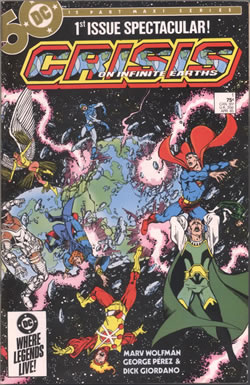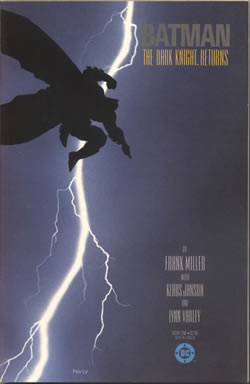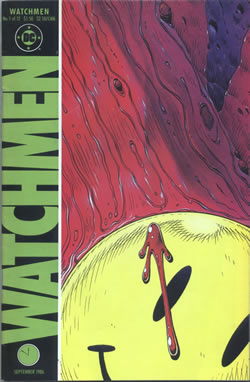
Crisis on Infinite Earths was named after the annual Crisis events in the Justice League comics, and aimed to rationalise the continuity glitches that had piled up in DC comics over the decades, and it was a cracking good read.

The Dark Knight Returns showed one possible future in which Batman has become an embittered recluse and Superman had become a lackey of progressively dishonorable governments. It struck a chord and became hugely successful in mainstream bookshops.

The Watchmen series was originally intended to star the Charlton heroes, which DC had acquired, but there was a change of heart and Moore was asked to revise the series to feature newly-created characters. But it's not hard to spot the Charlton originals beneath the thin veneer.
Copyright © 2020 The Story Works | Contact | Other sites hosted by TheStoryWorks